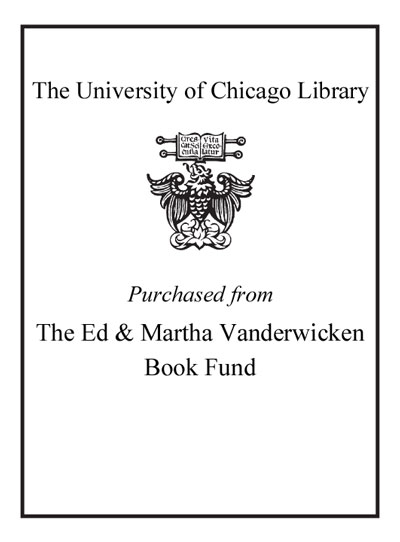Plausible neural networks for biological modelling /
Saved in:
| Imprint: | Dordrecht ; Boston, Mass. : Kluwer Academic Publishers, c2001. |
|---|---|
| Description: | ix, 259 p. : ill. ; 25 cm. |
| Language: | English |
| Series: | Mathematical modelling--theory and applications ; v. 13 |
| Subject: | |
| Format: | Print Book |
| URL for this record: | http://pi.lib.uchicago.edu/1001/cat/bib/4568306 |
Table of Contents:
- Preface
- Part I. Fundamentals
- 1. Biological Evidence for Synapse Modification Relevant for Neural Network Modelling
- 1.. Introduction
- 2.. The Synapse
- 3.. Long Term Potentiation
- 4.. Two Characteristic Types of Experiment
- 4.1. Food Discrimination Learning in Chicks
- 4.2. Electrical Stimulation of Nervous Cell Cultures
- 5.. Conclusion
- References and Further Reading
- 2. What is Different with Spiking Neurons?
- 1.. Spikes and Rates
- 1.1. Temporal Average-Spike Count
- 1.2. Spatial Average-Population Activity
- 1.3. Pulse Coding-Correlations and Synchrony
- 2.. 'Integrate and Fire' Model
- 3.. Spike Response Model
- 4.. Rapid Transients
- 5.. Perfect Synchrony
- 6.. Coincidence Detection
- 7.. Spike Time Dependent Hebbian Learning
- 8.. Temporal Coding in the Auditory System
- 9.. Conclusion
- References
- 3. Recurrent Neural Networks: Properties and Models
- 1.. Introduction
- 2.. Universality of Recurrent Networks
- 2.1. Discrete Time Dynamics
- 2.2. Continuous Time Dynamics
- 3.. Recurrent Learning Algorithms for Static Tasks
- 3.1. Hopfield Network
- 3.2. Boltzmann Machines
- 3.3. Recurrent Backpropagation Proposed by Fernando Pineda
- 4.. Recurrent Learning Algorithms for Dynamical Tasks
- 4.1. Backpropagation Through Time
- 4.2. Jordan and Elman Networks
- 4.3. Real Time Recurrent Learning (RTRL)
- 4.3.1. Continuous Time RTRL
- 4.3.2. Discrete Time RTRL
- 4.3.3. Teacher Forced RTRL
- 4.3.4. Considerations about the Memory Requirements
- 4.4. Time Dependent Recurrent Backpropagation (TDRBP)
- 5.. Other Recurrent Algorithms
- 6.. Conclusion
- References
- 4. A Derivation of the Learning Rules for Dynamic Recurrent Neural Networks
- 1.. A Look into the Calculus of Variations
- 2.. Conditions of Constraint
- 3.. Applications in Physics: Lagrangian and Hamiltonian Dynamics
- 4.. Generalized Coordinates
- 5.. Application to Optimal Control Systems
- 6.. Time Dependent Recurrent Backpropagation: Learning Rules
- References
- Part II. Applications to Biology
- 5. Simulation of the Human Oculomotor Integrator Using a Dynamic Recurrent Neural Network
- 1.. Introduction
- 2.. The Different Neural Integrator Models
- 3.. The Biologically Plausible Improvements
- 3.1. Fixed Sign Connection Weights
- 3.2. Artificial Distance between Inter-Neurons
- 3.3. Numerical Discretization of the Continuous Time Model
- 3.4. The General Supervisor
- 3.5. The Modified Network
- 4.. Emergence of Clusters
- 4.1. Definition
- 4.2. Mathematical Identification of Clusters
- 4.3. Characterization of the Clustered Structure
- 4.4. Particular Locations
- 5.. Discussion and Conclusion
- References
- 6. Pattern Segmentation in an Associative Network of Spiking Neurons
- 1.. The Binding Problem
- 2.. Spike Response Model
- 3.. Simulation Results
- 3.1. Pattern Retrieval and Synchronization
- 3.2. Pattern Segmentation
- 3.3. Context Sensitive Binding in a Layered Network with Feedback
- 4.. Related Work
- 4.1. Segmentation with LEGION
- 4.2. How about Real Brains?
- References
- 7. Cortical Models for Movement Control
- 1.. Introduction: Constraints on Modeling Biological Neural Networks
- 2.. Cellular Firing Patterns in Monkey Cortical Areas 4 and 5
- 3.. Anatomical Links between Areas 4 and 5, Spinal Motoneurons, and Sensory Systems
- 4.. How Insertion of a Time Delay can Create a Niche for Deliberation
- 5.. A Volition-Deliberation Nexus and Voluntary Trajectory Generation
- 6.. Cortical-Subcortical Cooperation for Deliberation and Task-Dependent Configuration
- 7.. Cortical Layers, Neural Population Codes, and Posture-Dependent Recruitment of Muscle Synergies
- 8.. Trajectory Generation in Handwriting and Viapoint Movements
- 9.. Satisfying Constraints of Reaching to Intercept or Grasp
- 10.. Conclusions: Online Action Composition by Cortical Circuits
- References
- 8. Implications of Activity Dependent Processes in Spinal Cord Circuits for the Development of Motor Control; a Neural Network Model
- 1.. Introduction
- 2.. Sensorimotor Development
- 3.. Reflex Contributions to Joint Stiffness
- 4.. The Model
- 4.1. Neural Model
- 4.2. Musculo-Skeletal Model
- 4.3. Muscle Model
- 4.4. Sensory Model
- 4.5. Model Dynamics
- 5.. Experiments
- 5.1. Training
- 5.2. Neural Control Properties
- 5.3. Perturbation Experiments
- 6.. Discussion
- References
- 9. Cortical Maps as Topology-Representing Neural Networks Applied to Motor Control: Articulatory Speech Synthesis
- 1.. Lateral Connections in Cortical Maps
- 2.. A Neural Network Model
- 3.. Spatial Maps as Internal Representations for Motor Planning
- 3.1. Dynamical Behavior of Spatial Maps
- 3.2. Function Approximation by Interconnected Maps
- 3.3. Dynamical Inversion
- 4.. Application of Cortical Maps to Articulatory Speech Synthesis
- 4.1. Cortical Control of Speech Movements
- 4.2. An Experimental Study
- 4.2.1. The Training Procedure
- 4.2.2. Field Representation of Phonemic Targets
- 4.2.3. Non-Audible Gestures and Compensation
- 4.2.4. Generation of VVV ... Sequences
- 5.. Conclusions
- References
- 10. Line and Edge Detection by Curvature-Adaptive Neural Networks
- 1.. Introduction
- 2.. Biological Constraints
- 3.. Construction of the Gabor Filters
- 4.. The One-Dimensional Case
- 5.. The Two-Dimensional Case
- 6.. Simple Detection Scheme
- 7.. An Extended Detection Scheme
- 8.. Intermezzo: A Multi-Scale Approach
- 9.. Advanced Detection Scheme
- 10.. Biological Plausibility of the Adaptive Algorithm
- 11.. Conclusion and Discussion
- References
- 11. Path Planning and Obstacle Avoidance Using a Recurrent Neural Network
- 1.. Introduction
- 2.. Problem Description
- 3.. Task Descriptions
- 3.1. Representations
- 3.2. Fusing the Representations into a Neuronal Map
- 3.3. Path Planning and Heading Decision
- 4.. Results
- 5.. Conclusions
- References
- Index


